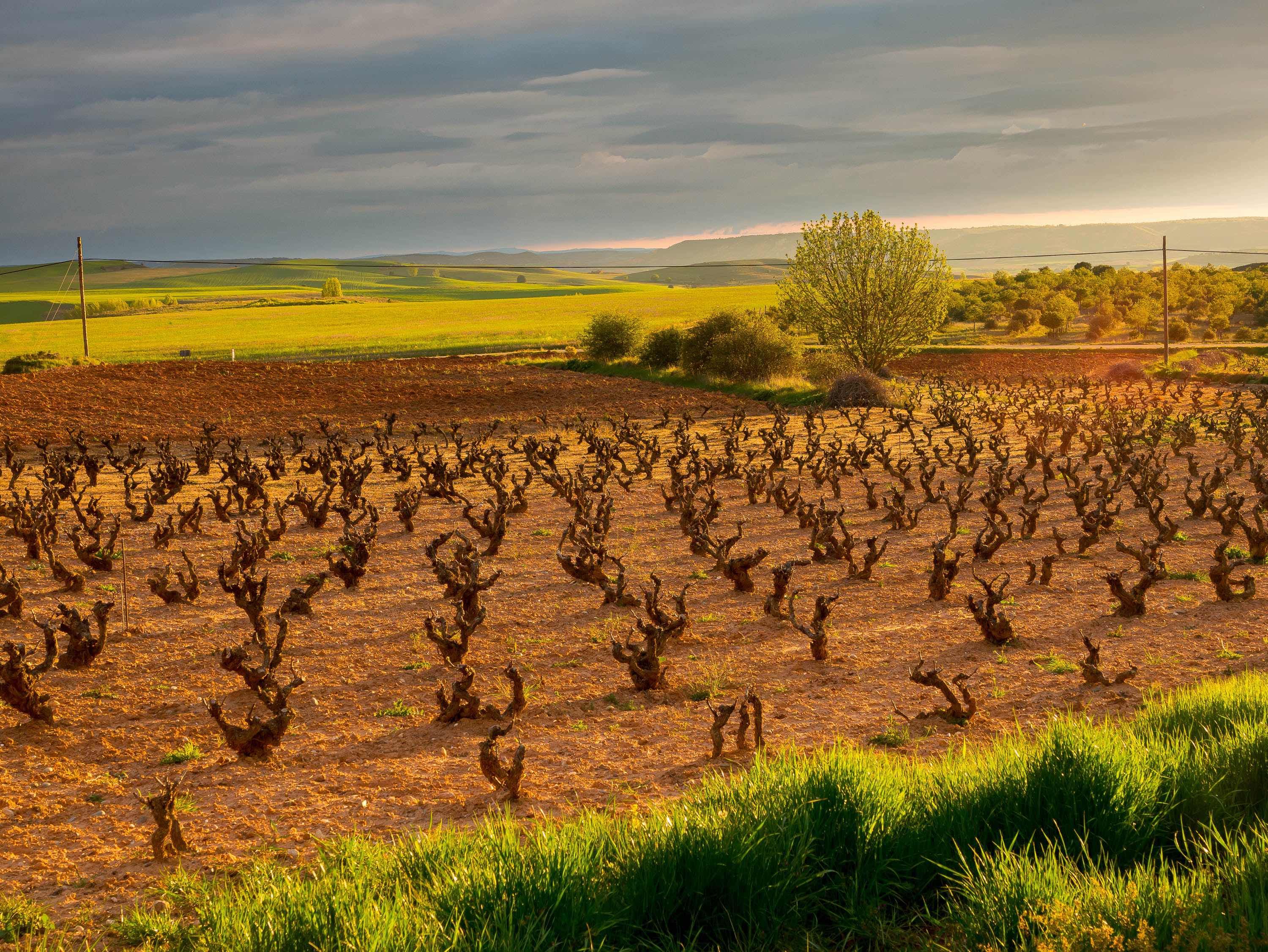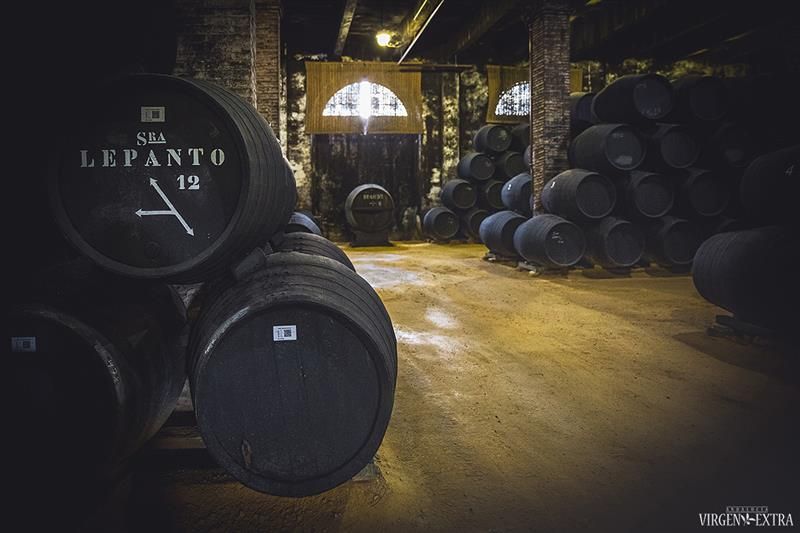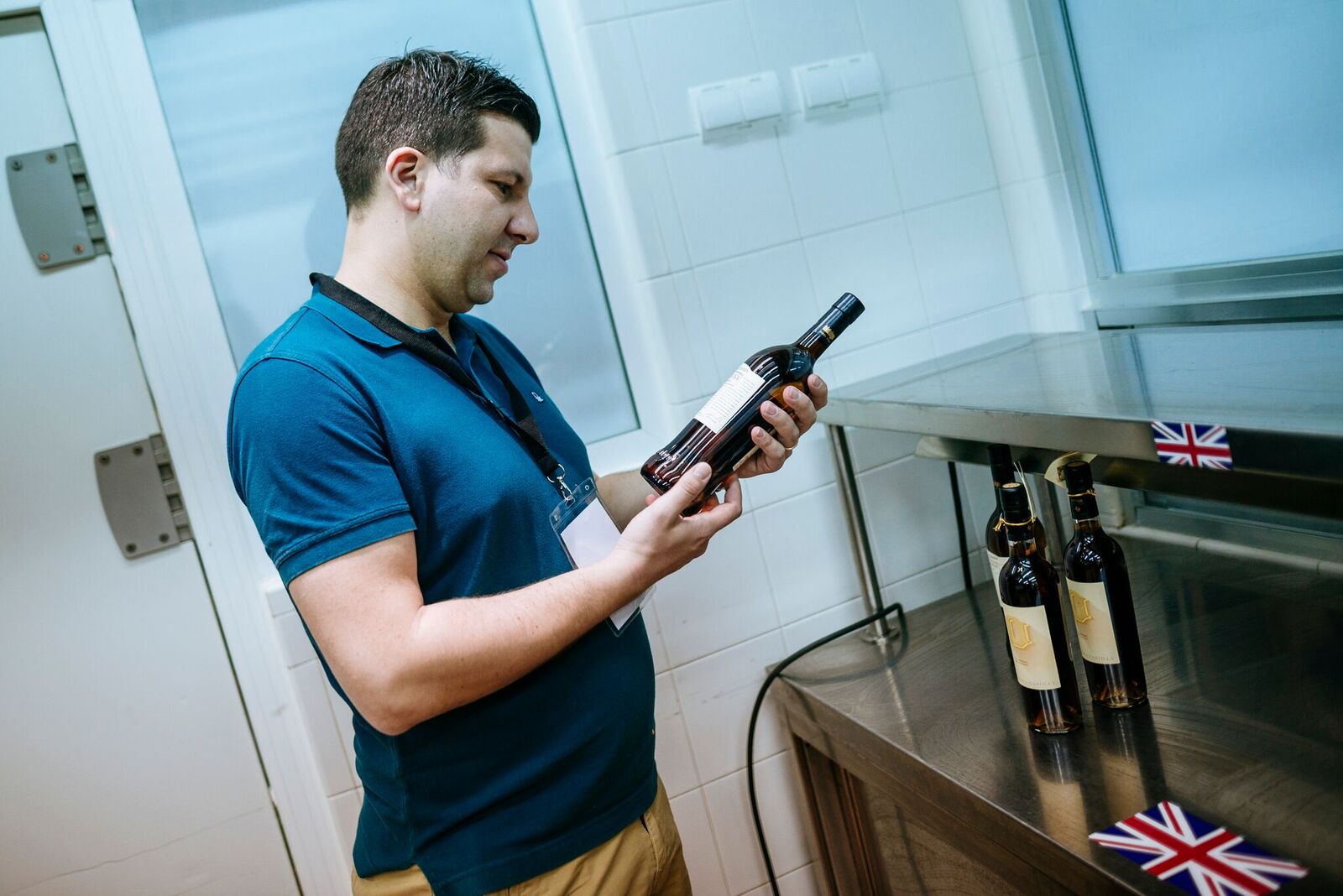Walking downstairs at Corney & Barrow’s City of London offices I was hit by an intoxicating smell. It was like walking into a bodega in Jerez - the air alive with the scent of yeast, almonds and bruised apples. The occasion was the unveiling of Viña Corrales – some very special single vineyard (or nearly single vineyard as I’ll explain later) sherries from Peter Sisseck, the great Dane behind Pingus in Ribera de Duero.
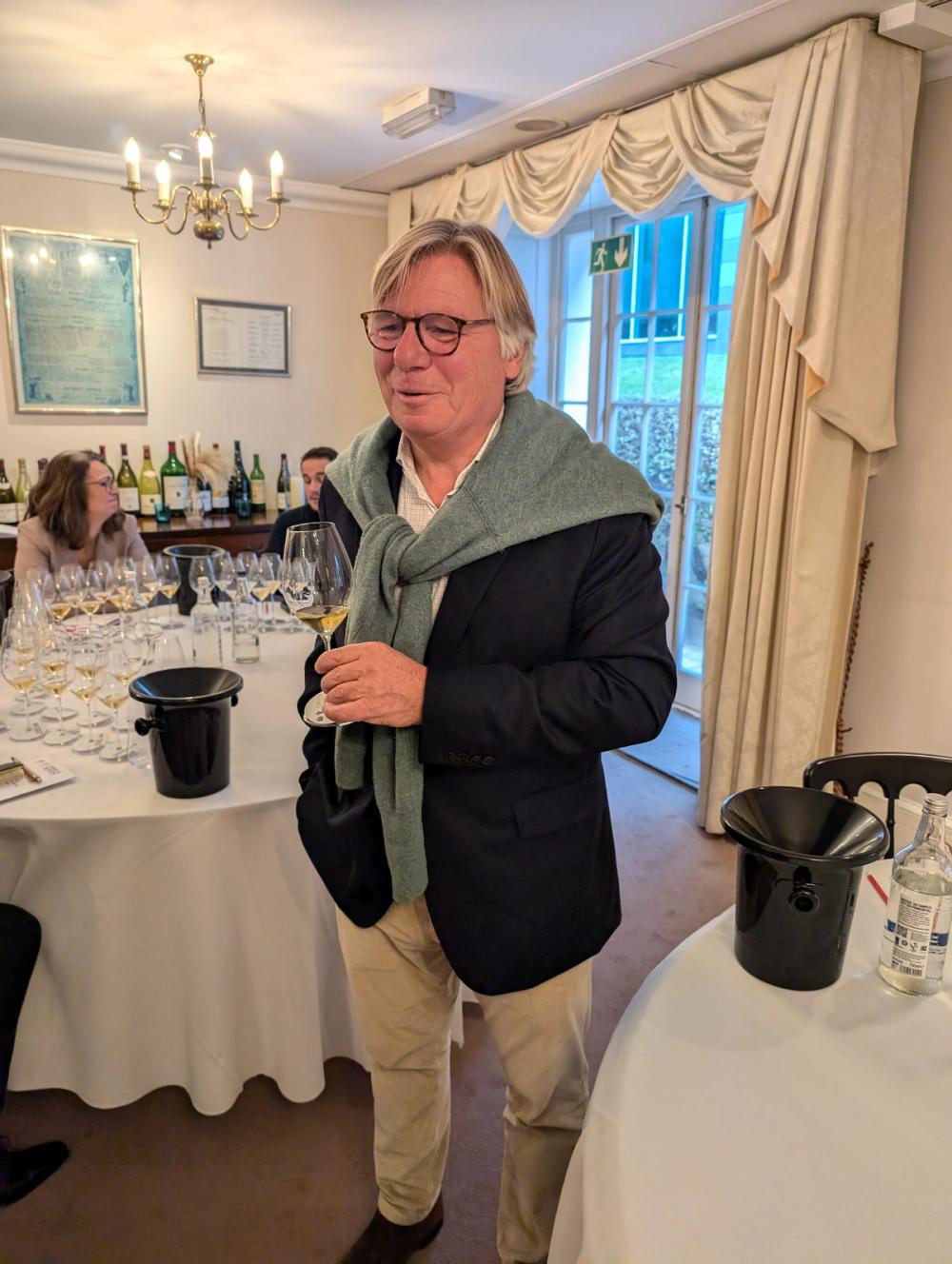
Peter Sisseck, Corney & Barrow, London, October 2024
He’s been a lover of sherry since he visited the region in the ‘90s. The problem was the wines seldom lived up to the experience of drinking a fino in a bar in Jerez or straight out of the barrel in Sanlúcar de Barrameda. The reason was that the heavy charcoal filtering used to make lighter wines stable and pale also robbed them of character and meant that they deteriorated quickly, losing that magical freshness.
Furthermore, the importance of the vineyard had been lost. “All the oenologists said: we don’t make wine from vineyards. Yeast and cellar are more important,” Sisseck explained. But in the past Jerez vineyards like Macharnudo or Miraflores would have been as well-known as Montrachet. “Now we are learning the importance of vineyard,” he said. Or should that be relearning. A similar process is going on in Champagne with grower producers.
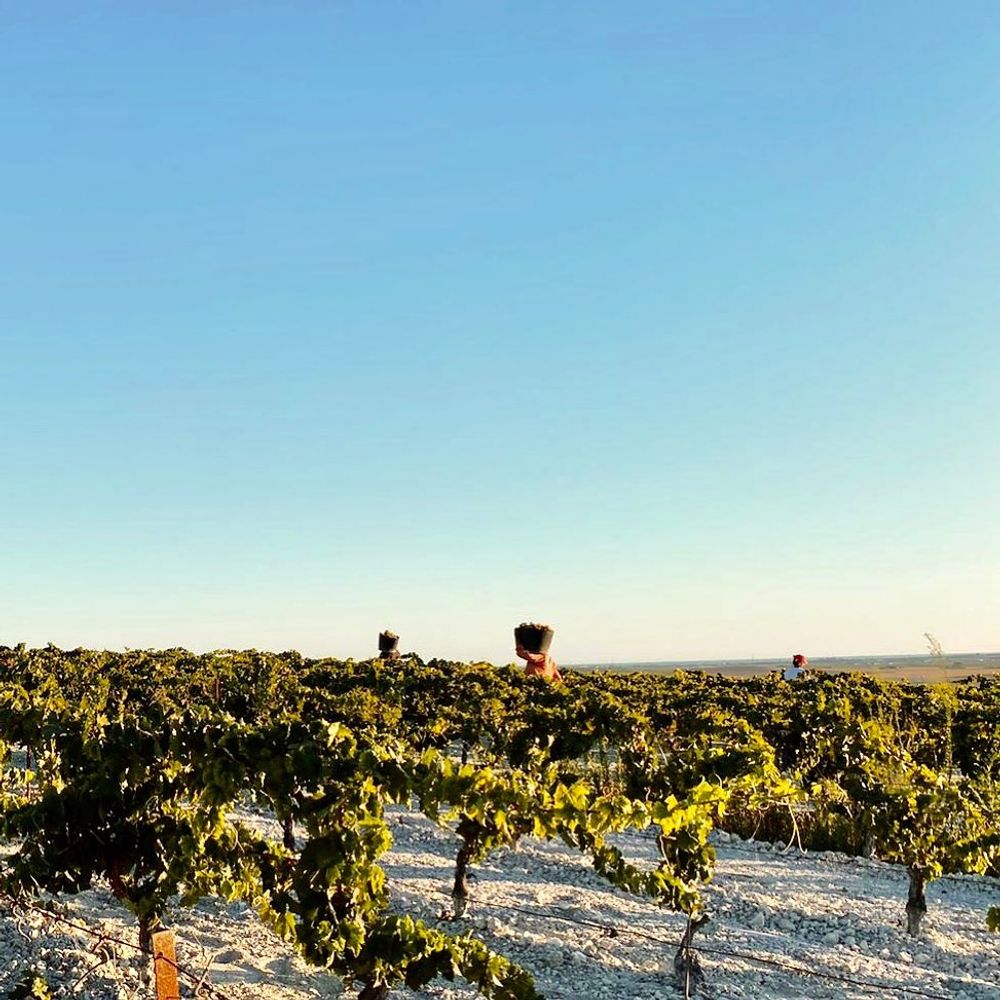
"Vineyards like Macharnudo or Miraflores would have been as well-known as Montrachet."
Sisseck finally took the plunge in 2017 creating Bodega San Francisco Javier in conjunction with Carlos del Rio González-Gordon from the González Byass family. They began by acquiring a solera of sherry started in the 1960s by Ángel Zamorano Corrales at Calle San Francisco Javier, hence the name of the bodega. Not everyone was entirely positive: when they first took it over there were mutterings in the industry that they were, in Sisseck’s words “destroying this beautiful thing.”
They acquired eight hectares of vines in pago Balbaína and two hectares in pago Macharnudo. The former is closer to the sea and at higher elevation leading to fresher, more elegant wines whereas Macharnudo produces wines with more body.

Bodega San Francisco Javier
According to Sisseck the acquired solera had a Balbaína character though it didn’t only contain wines from a single pago. Since 2017 they have been making wines and adding them to new criaderas (layers of barrels) added to the existing solera. Sisseck plans to use natural yeasts as far as possible though “the first vintage we struggled with ferment” so they had to use a cultured product. The wines are made only from the free run juice while the press wines are sold off to other bodegas. They add a little SO2 before fermentation to “knock out the bacteria” but then no more is added.
New regulations from the Consejo Regulador which came into force this year mean that lighter styles of sherry like fino and manzanilla no longer had to be fortified if they reach a natural 15% ABV. Sisseck described fortification as “the elephant in the room” when I brought it up. He explained that “if alcohol is too low it leaves the field open to bacteria.” Hence the larger producers are “nervous about low alcohol because a bacteria taking hold in a big cellar would be a disaster.” With fewer barrels to keep an eye on he thinks they can make sherry safely at 14-14.5% with no danger of spoilage.
He has not been impressed with some of the new wave table wines coming out of the region labeled as Vino de Pasto: “They can be boring,” he said. ”They’re throwing out the baby with the bathwater, Palomino is a boring grape.” So his wines are traditional finos but with an increasing emphasis on terroir as the solera develops.
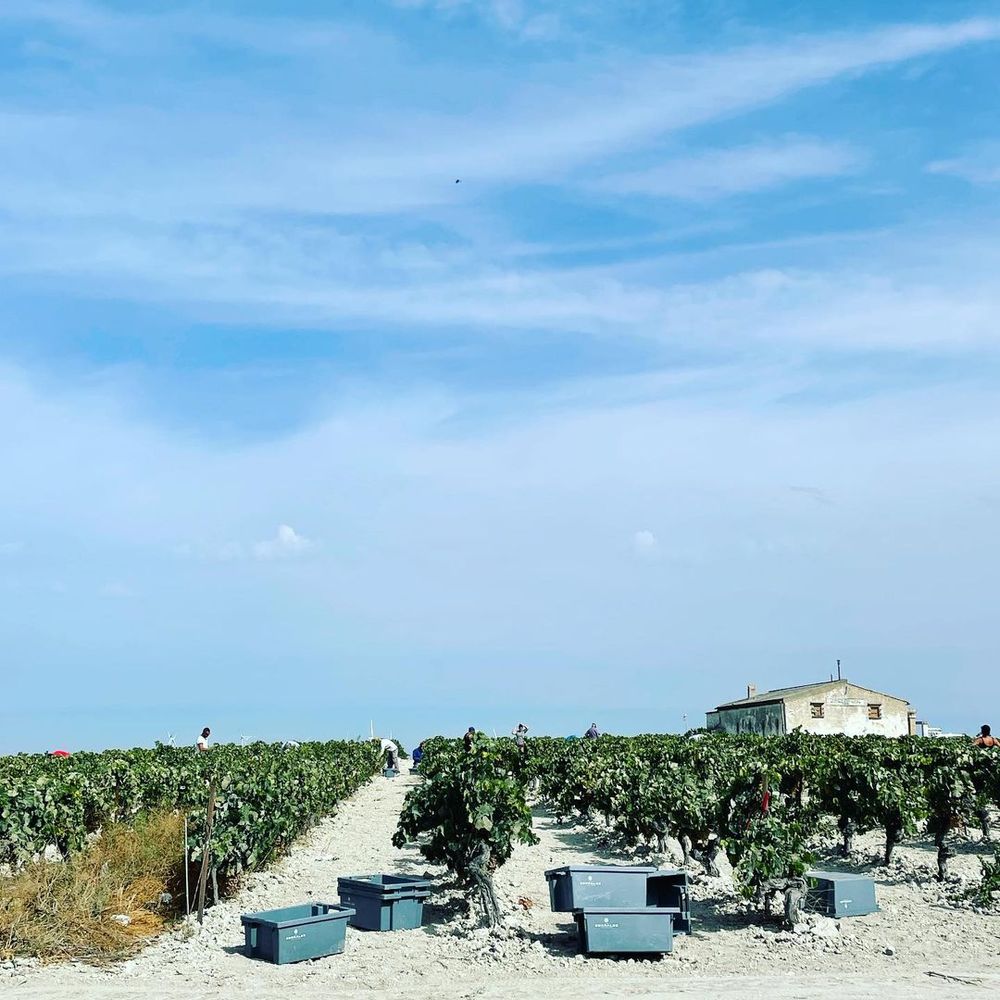
The first release of Viña Corrales was in 2020. Just 1500 bottles which sold out quickly. “The Chinese bug was coming. Whole world went through period of alcoholism,” he joked in his deadpan Danish manner. That year they took out two sacas, withdrawals from the solera, one in the spring and one in the autumn. They tasted very different. According to Sisseck the best time to take out of the Balbaína solera is in the springtime, it needs the spring flor.
“If we don’t take enough out the wine gets old and heavy. Too much and we lose maturity. We were taking out 6% annually but I think sweet spot is closer to 7%.”
It hasn’t all been plain sailing. At one point in 2022, the flor died back and Sisseck worried that he had lost the solera, “I said ‘I had everything under control’ but I was worried.” The 2022 release is noticeably darker than other wines. To all intents and purposes these are vintage wines with the character of the solera changing according to the seasons and as it becomes more predominantly Balbaína. “The cellar is the second terroir”, Sisseck said. Currently they have 250,000 litres ageing and sell 8-9,000 litres a year
The wines are as far as possible the true taste of solera: “we use no filtration whatsoever. It just sits. It takes time. We lose so much to evaporation. Every time we sell one, we lose one.”

We tasted eight wines in total including the Sobretabla, a wine with one year ageing that will go into the solera, which had a bruised apple character, poised somewhere in style between a table wine and fino. Sisseck described it as a “clumsy white wine” but I think he could have bottled that. And we also tasted wines from earlier in the solera system that had three and seven years ageing.
There was a treat at the end: a pre-release sample of his Macharnudo wine. It’s made in a style called ‘fino–amontillado’, a heavily aged fino known in Sanlucar as a manzanilla pasada (Hidalgo make a fine example). It’s richer and more full-bodied than the Balbaína wines.
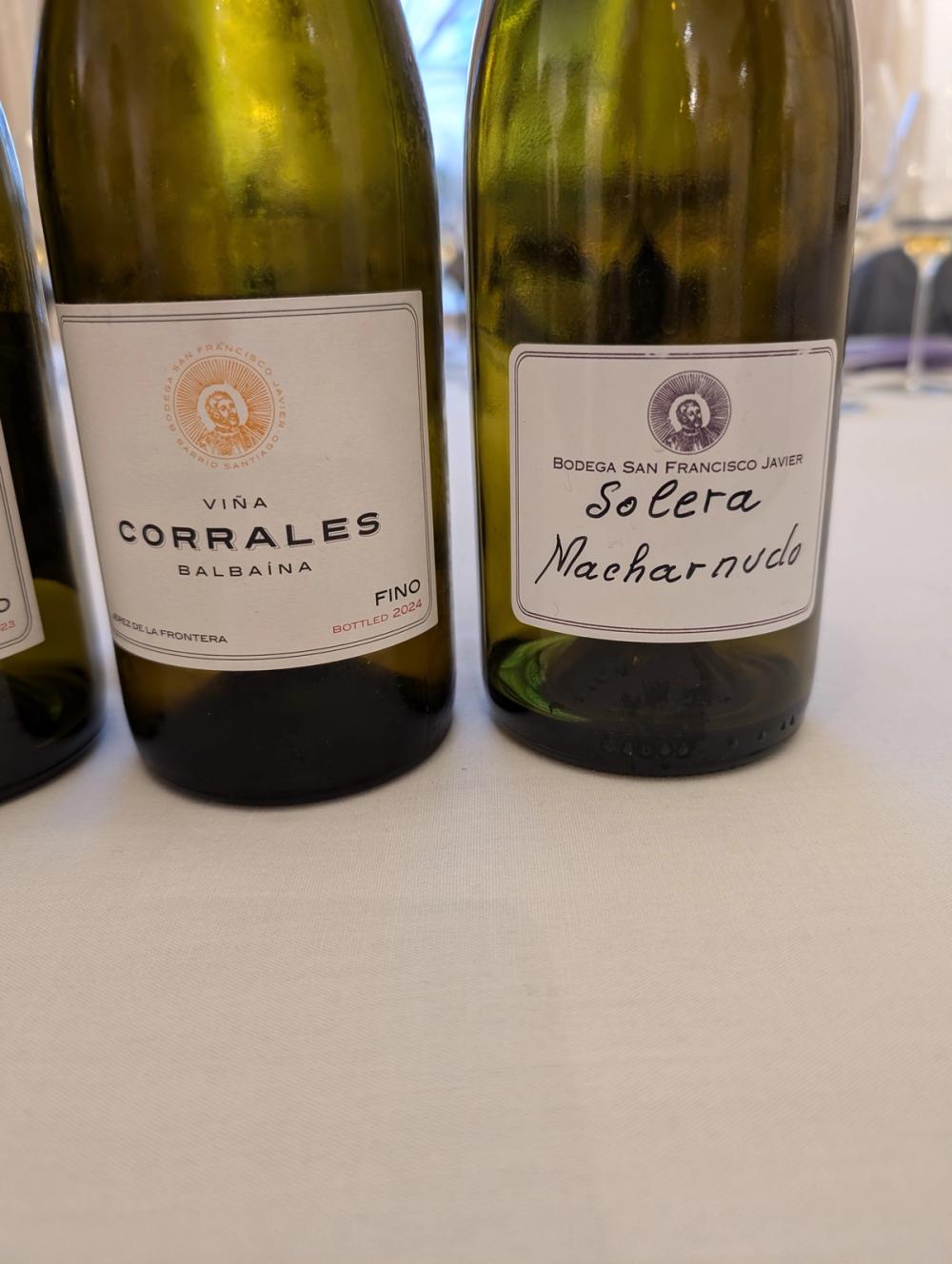
It was noticeable how fresh the first wines were even after years in bottle. Sisseck thinks future releases will be good for long ageing. To show intent they are packaged in Burgundy bottles with proper corks; “a brave move” according to Guy Seddon head of fine wine buying at Corney & Barrow channeling his inner Sir Humphrey. The idea is for them to be sold in smart restaurants. When they gave a taste to the old cellar master to try he described it as “almost too perfect”. A back-handed compliment if I ever heard one.
With ventures like Viña Corrales, en rama, single vineyard and the rediscovery of obscure grapes varieties, there seems to be real energy and excitement about sherry at the moment. I commented to Margaret Rand, editor of Hugh Johnson’s Pocket Wine Book, that it’s great that sherry seems finally to have woken up after decades of slumber. She replied, “they’ve been saying that for years”. Maybe this time it’s true.
Tasting the new Viña Corrales wines (Bodega San Francisco Javier)
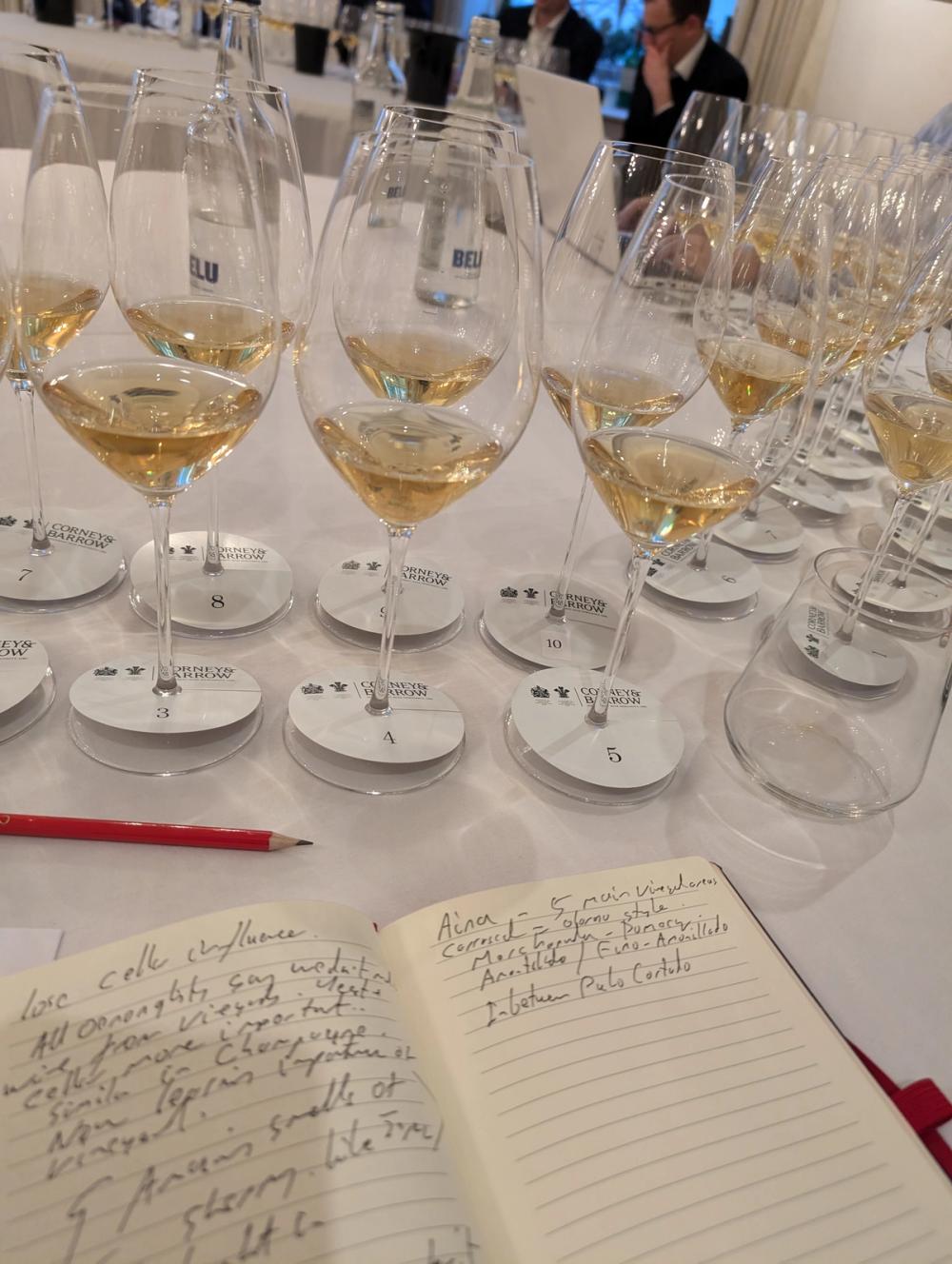
Viña Corrales Pago Balbaína 2024 saca
Almond on the nose, intense and nutty. On the palate there’s apple and vanilla It’s round, very creamy and textured. There's a real Burgundian quality about this with a long salty finish.
Viña Corrales Pago Balbaína 2023 saca
Smoky yeasty character on the nose. Unbelievable freshness on the palate, round and full-bodied.

Viña Corrales Pago Balbaína 2022 saca (the current release stocked by Corney & Barrow RRP £37.85)
What a nose! Saline fresh. On the palate it's creamy with fresh apple that has a distinct salty tang. Very long and complex. This is a delight to drink.
Viña Corrales Pago Balbaína 2021 saca
Strong apple character on the nose, so fresh. Wow! Explosive on the palate, gorgeous freshness with yeasty Marmite notes, nutty and long. Very good. This might be my favourite.
La Cruz Fino Macharnudo 2024 saca
Pre-release saca from solera laid down at Bodega San Francisco Javier. Average age 6-7 years - fino-amontillado style. Bruised apple on the nose, yeast, a little toffee and a slightly funky character. Toasted nuts and caramel on the palate. Big wine, not as fine as the Corrales releases, but huge fun.
Viña Corrales and the other wines from Bodega San Francisco Javier are imported and sold in the UK through Corney & Barrow which is a commercial partner of The Buyer. To discover more about them click here.

